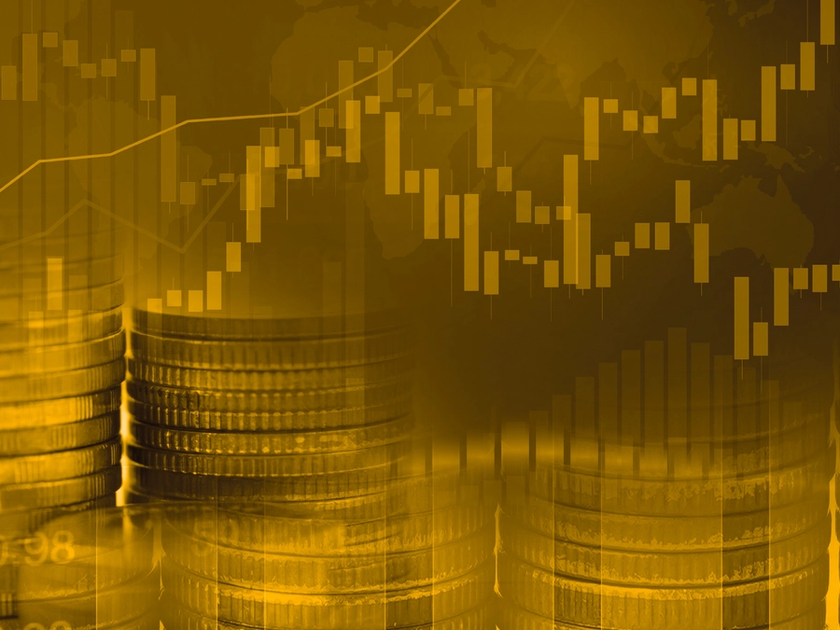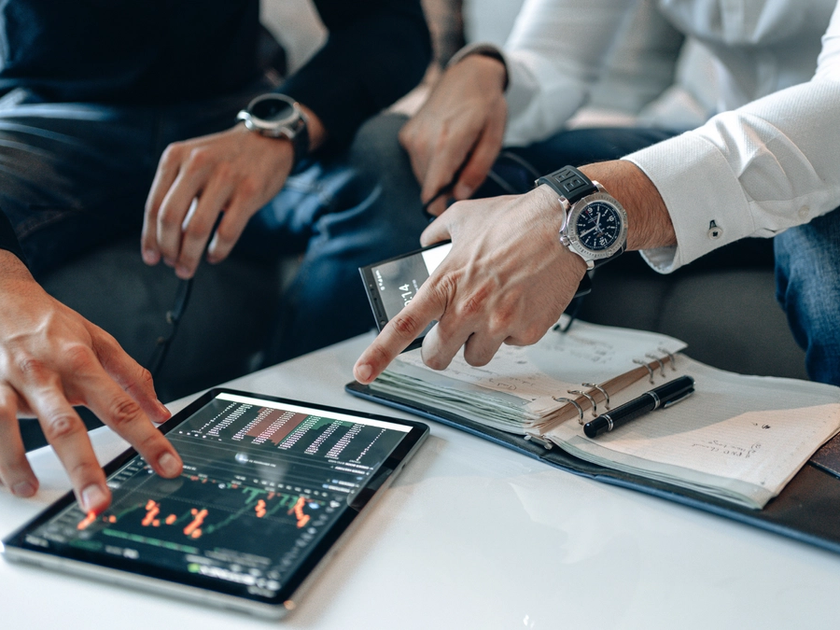What is cardano mining?
Mining is an expression used in the crypto-world that covers how new coins are being “mined”. It’s a metaphor, referring to the times where our economies were bound up on gold. Gold diggers went to the mines to dig for gold, which they got paid for, and at the same time expanded the world's finances.
And that’s also how crypto mining can be understood. Here, mining is a digital activity that takes place on computers. When a crypto miner comes across crypto, the person is then rewarded with crypto coins, and the accumulated amount of coins in the economy goes up.
That’s how bitcoin , among others, works.
But that type of mining only works for cryptocurrencies who use the so-called “proof-of-work” method to mine for crypto.
Read more about proof-of-work mining here .
Cardano doesn’t use proof-of-work. This coin uses proof-of-stake. That means that cardano technically isn’t being mined at all.
How cardano (ADA) is “mined”
First and foremost, you need to know that cardano is the name of the blockchain , while ADA is the name of the blockchain’s native cryptocurrency . Just like ethereum is the name of the blockchain, while the native cryptocurrency is called ether (ETH).
Before we can explain how new ADA coins are being issued under proof-of-stake, we first need to explain what proof-of-work mining is and how it works.
Proof-of-work mining.
In a proof-of-work blockchain, new coins are added through mining. But mining isn’t only “finding” new coins, like with gold diggers and their gold - in a crypto context, mining is the way that new transactions on the blockchain are being confirmed and validated.
So if you were to purchase bitcoin for example, your purchase will be registered on the blockchain. Your purchase is also called a transaction. All transactions on a blockchain are publicly available, so everyone participating in the network can see what’s going on. After there’s been enough transactions registered to collect them into a larger bundle – also called a block – the block is then ready to be added to the blockchain.
And this is where the bitcoin miner enters the picture. Because before a new block can be added to the blockchain, the block’s encrypted hash-code needs to be found.
A hash code could look like this:
C9BF0A990E24B01EDD21D89570ABB5C5CCE9FAB81224E40B8DB5969C59A3EE23
As you can see, the code is quite long and hard to guess. That’s why crypto miners need to run a program on their computer, which guesses all sorts of different codes before the actual hash-code is found.
Everyone can participate in the guessing game. That’s why there’s a race on who can find the right answer first.
When a person finds the correct hash code for the new block of transactions, the person is then rewarded with bitcoins. That’s the way that new bitcoins are brought into circulation.
But before the person can receive their bitcoins as a reward, the rest of the blockchain network checks that the transactions in question correspond to the transactions in the public blockchain ledger. If more than 50% of the network can confirm the transactions in the block, it’s added to the blockchain.
The person will then receive some newly “mined” bitcoins as a reward for their hard work of finding the correct hash code – and that’s how more bitcoins are produced.
But at the same time, bitcoin mining also makes sure that all blocks being added correspond to the transactions in the public blockchain ledger. That’s how cryptocurrencies gain trust and security.
Proof-of-stake mining.
With proof-of-stake, which cardano uses, the mining takes place in a different way. Here, there’s no open competition to be first.
Instead, certain people are being selected to find the correct hash code for new blocks. The way that these people are selected happens through staking.
Staking means to bet a stake, to either lose or win a bet or a draw.
Practically, this means that people in the cardano network can “stake their coins” in the draw to be selected to find the next code. So if you were to stake 10 cardano coins, and there are 10,000 coins in total, you’d have a 1% chance of winning the draw.
In reality, it’s a bit more complicated. Very few people own enough coins to actually have a real chance of being selected. That’s why there’s been created so-called stake pools – a collection of several people’s stakes, so they have a bigger chance of winning as a group.
When a stake pool then gets selected to validate the next block in the blockchain, every participant in the stake pool will then get rewarded according to the amount of coins they’ve put in the pool.
In July 2022, the reward was about 4,6% of the value of your stake.
Tip: You can learn more about cardano’s reward system via their staking calculator .
How are new cardano coins issued?
When a block is added to a proof-of-stake blockchain, it doesn’t result in new coins. Cardano has a max cap of 45 billion coins, where about 33,5 billion were in circulation in July 2022.
As mentioned before, after a staking pool has completed a new block to the blockchain, they will get rewarded. This can take place in to forms of rewards:
- reward in the form of fees
- reward in the form of “new” ADA coins
This is because it’s now cardano’s parent company, IOHK, who decides which type of reward to use. In the future, it should be up to the cardano network as a community to decide which type of reward to use when new blocks are added – and cardano has named this new model governance .
The type of reward being selected depends on a number of theories based on math, finances, and game theory, of which the cardano blockchain was developed on. You can read more about the theories of cardano staking on their website .
When the reward type is based on fees, it means that more coins won’t be brought into circulation. And when the reward type is “new” ADA coins, they’re coming from the coin vault – which is the same as the difference between the max cap on 45 billion coins and the current amount of coins (33,5 billion in July 2022).
The “new” ADA coins aren’t new in the same way as they are with bitcoin , ethereum and other proof-of-work cryptocurrencies. When a block is added to a proof-of-work blockchain, a coin will be created – that would be the first time the world would ever see that coin.
With proof-of-stake, “new” coins can also be used as rewards, but those coins are already known to cardano, since they come from their internal coin vault. In other words, they’ve all been there from the beginning, and won’t be brought into circulation until they’re being issued as rewards.
Indirect cardano mining.
Even though cardano can’t be mined directly, there are services who make it possible indirectly. An example of such service is unMineable . Here, you use your computer to mine a different cryptocurrency - such as bitcoin , which will then be converted into cardano.
Buy cardano.
If you’re thinking about buying cardano or other cryptocurrencies, it’s a good idea to choose a Danish platform without incomprehensible buzzwords. You’ll get just that with Lunar Block .
When you’ve downloaded the app and signed up to Lunar Block, you can trade cardano and the other biggest, popular cryptocurrencies.
Download Lunar and get started with crypto
Cryptocurrencies can rise and fall.
When you trade cryptocurrencies, you need to be aware that it carries a large risk. The value of your cryptocurrency can both rise and fall, and you can risk losing the entire amount you’ve invested in cryptocurrencies.
Cryptocurrency trading is done through Lunar Block. Lunar Block is not regulated by the Danish Financial Supervisory Authority (Finanstilsynet). That means you won’t have the same protection as when trading e.g. stocks or other regulated assets.
We do not counsel.
We do not advise on currencies and do not make recommendations for either buying or selling. We can provide factual information about the different currencies, but past price developments are not an indication of future developments.
No information from Lunar Block should therefore be considered as recommendations and all decisions are up to you alone.
Last updated April 18, 2023. We’ve collected general information. Please note, that there may be specific circumstances that you and your business need to be aware of.
You might also like...
Where can I pay with solana?
Cryptocurrency is becoming so widespread and acknowledged abroad that you can use the currency just like regular payment methods on some...
How do you buy solana as regular stocks?
Because solana (SOL) is a currency, and not a business, you can’t actually invest directly in solana like it’s a stock.
Are cryptocurrencies a good investment?
Cryptocurrencies can be a great addition to your portfolio - if you’re willing to run the risk. Cryptocurrencies are “high risk - high...
What is bitcoin?
Bitcoin is a digital currency, or cryptocurrency, as it’s also called. Bitcoin is the first and largest cryptocurrency measured on market...


